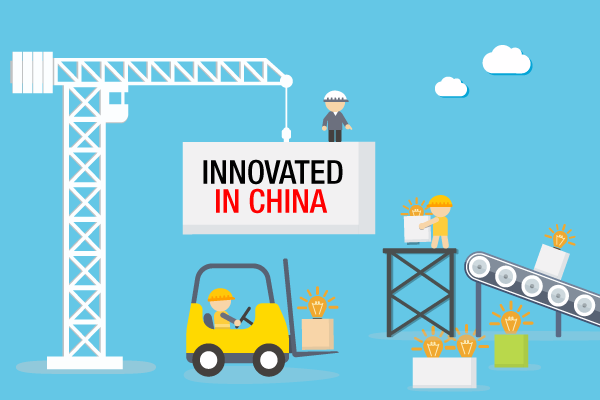China, the Next Innovation Powerhouse

By George S. Yip and Bruce McKern
China’s vast, diverse and still-growing market, its legions of low-cost scientists and engineers, and its innovation ecosystem of research institutes, technology parks and universities (built by the government in just three decades) have created a fertile ground in which Chinese companies are now innovating, not just for China, but for the world. As a result, the country has finally emerged from years of being seen as merely the factory of the world and is now rapidly assuming a new role: innovator to the world.
But even as it embraces its newfound role, China is not resting on its laurels as factory to the world. It is embarking on a bold new drive to raise the productivity of manufacturing towards Western standards by 2025.
Domination of production matters for innovation because in engineering-based products, much of innovation consists of incremental improvements that occur alongside the production process. Also, more substantial innovations can quickly be manufactured and tested in the marketplace – particularly true in China, where customers are diverse and numerous, as well as quick adopters. So the country that hosts the bulk of production will also generate the bulk of the innovation.
So while the West may have invented the aerial drone and the electric vehicle, China dominates their production and is now a leader in applications. China-based DJI, the market leader in small aerial drones, is launching new applications in surveying and crop management. In electric vehicles, the Chinese government’s announced goal of sales of 3 million a year by 2025, backed by attractive subsidies, has triggered a boom in EV start-ups. Many of these are supported by substantial companies such as Tencent, Alibaba and SAIC Motor Corp. Only China’s powerful, centralised government can solve the chicken-and-egg problem of installing charging stations nationwide to persuade drivers to buy electric vehicles. China has already started to build such a charging network. Having built more than 17,000 km of high-speed rail lines is less than 10 years, China has the will and the technology to surmount a challenge that has so far stymied other countries.
It is true that China hasn’t yet produced breakthrough innovations such as the iPhone, partly because these require consumers with high disposable incomes. But as shown above, Chinese companies are now the leaders in their home market, and increasingly beyond, in a great variety of incremental, applications-oriented innovations.
Other examples include Huawei’s Single RAN (radio access network), a single base station that can cover 1G, 2G and 3G telephony; and high-speed trains, an industry in which China has become the centre of excellence and the major exporter to the world. Haier has recently produced a refrigerator with three different temperature-compartments: the third is for storing ice cream so that it can be eaten straight from the fridge, ideal for American consumers who don’t like to wait. In China’s dynamic smart phone market, Xiaomi’s phones make clever use of an Android platform coupled with rapid responses to feedback from its army of loyal “Mi-fans”. This is from a company which didn't exist six years ago, but is now one of the top five mobile players in China.
For China, the sky is no longer the limit. In 2014, Commercial Aircraft Corporation of China (COMAC) delivered its first commercial jet aircraft, the ARJ21 regional jet. Soon, COMAC’s C919 narrow body jet, designed to compete with the Boeing 737 and the Airbus equivalent, will have its maiden flight. And China’s recent launch of a satellite to test quantum communications could herald a new era of innovation in communications, cyber-security and space technology.
China has a unique winning combination of attributes that drives innovation: its ability to absorb scientific and technical knowledge from other nations; a huge home market to launch and test new products before going international; a manufacturing capability that allows China to localise the production of products invented elsewhere; a large, relatively low cost but skilled labour force (in R&D as well as in manufacturing); a culture of competition-driven risk-taking; and a clear vision on the part of the government to establish technology parity or supremacy. The first three attributes represent a winning trifecta seen only twice before in history – first, with the expansion of the British Empire in the 18th and 19th centuries and, second, with the rise of the American commercial empire after 1945. It is this combination that emboldens China to challenge Airbus and Boeing, something that even Japan in its heyday did not dare.
We will see this ambition in other industries, because China innovates differently from the rest of the world. In China’s fast growing markets, which are more forgiving than those in the stagnant West, Chinese companies know that the bigger risk is not to try something, rather than to make a mistake and lose money. This trial and error approach fits very well with the Chinese culture of pragmatism. Indeed, China’s first reforming Communist leader, Deng Xiaoping, liked to talk about “crossing the river by feeling the stones.” Kevin Wale, President and Managing Director of GM China, put it this way: “What China does better than any place else in the world is to innovate by commercialization, as opposed to constant research and perfecting the theory, as in the West.”
China is on an inexorable course to become, in its own words, a global innovation powerhouse, and foreign multinational companies must prepare for this new era. To do so they must participate in the Chinese innovation ecosystem, as Apple plans to do by setting up its first R&D centre in China this year. Multinationals must learn to innovate in China, both for the local market and for the world.
George S. Yip and Bruce McKern are both former Co-Directors of the Centre on China Innovation, and now Visiting Scholars, at China Europe International Business School; and co-authors of China’s Next Strategic Advantage: From Imitation to Innovation (The MIT Press, 2016). Yip is now Professor of Marketing and Strategy at Imperial College Business School. McKern is now Honorary Professor at the University of Sydney and recently Visiting Fellow at Oxford’s Saïd Business School.
This article was first published by The Economist Intelligence Unit.













